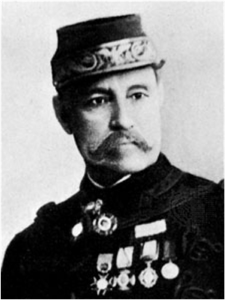From The Peopling of New York City
The influx of Jews into Mexico began during the time period immediately following the Spanish Inquisition. Many of these Jews were forced to convert to Christianity to avoid persecution by the Catholic Church, although some practiced their religion in secret. Because of the strong power of the Catholic Church, the population of Jews immigrating to Mexico during the Spanish Colonial Period (1739-1856) dropped immensely.
However, during the 1860’s many German Jews settled in Mexico after Maximilion I of Mexico formally invited these Jews into the country. Mexico’s Ashkenazi Jewish community began to develop during the 1880's when pogroms in Russia and Romania forced them to emigrate. Shortly following, in 1885, the first Jewish congregation was established, allowing Jews to practice their religion in public.
In addition, with the collapse of the Ottoman Empire in 1922, many Sephardic Jews fled their home countries of Morroco, Turkey, and France to come to Mexico. These Jews spoke Ladino, an inherently Jewish language with Spanish roots. These Jews began as street peddlers, and over time, these stands became large-scale businesses. Finally, the last large wave of Jewish immigrants in Mexico occurred during World War II, when many Jews tried to escape the Nazi regime.
Prior to the 1900's, many Mexican Jews frequently crossed the Mexico-U.S. because they didn’t need to present their passport. Many came to make a living, often working as sharecroppers and tenant farmers for large landholders. Between 1821 and 1875, 75 different governments came to power in Mexico. Portifiro Diaz, a harsh dictator took over in 1876. After being overthrown in 1910, many of Diaz’s supporters, predominately upper class citizens, fled Mexico to cities such as El Paso and San Antonio. During this time period, when many different leaders were taking over the Mexican government, America became a place of refuge for the overthrown groups and their supporters, who were often tormented back home.
Many Mexicans often immigrated to America because of the poverty levels back home, and the constant threats of war. Many Jews did not feel safe in Mexico, because Jews were often targeted during times of crisis. In addition, the economy in Mexico at this time was crumbling, and in order to support their families and make decent wages, many Jews went in search of jobs in the United States. In addition, with the development of transportation, such as the construction of railroads, many Jews and others found it easier to emigrate. Many peasants left by way of railroad to make a living in America, to New York City in particular, where companies often requested they come due to the lack of labor. In Flatbush, Mexican Jewish men often filled positions in the mining and railroad industries, while the Jewish women worked in the garment industry.
Today, Mexican Jews join many other diverse Jewish groups living in Flatbush, where the Jewish community there has grown to include a large proportion of both Ashkenazim and Sephardim. They have been able to prosper in business in the Flatbush area, and are able to openly practice their religion without fear of persecution.

